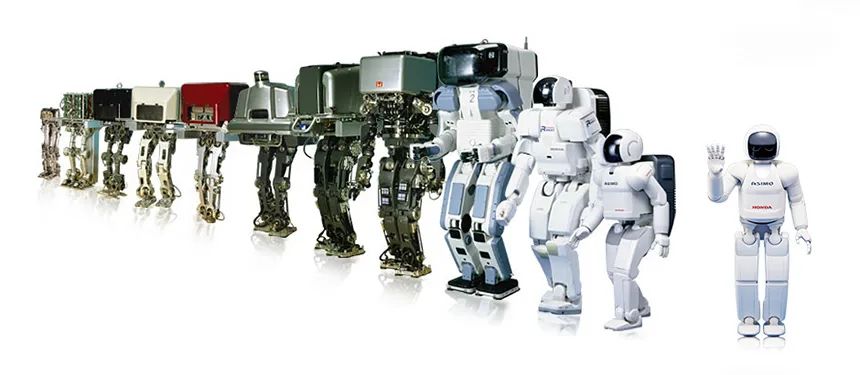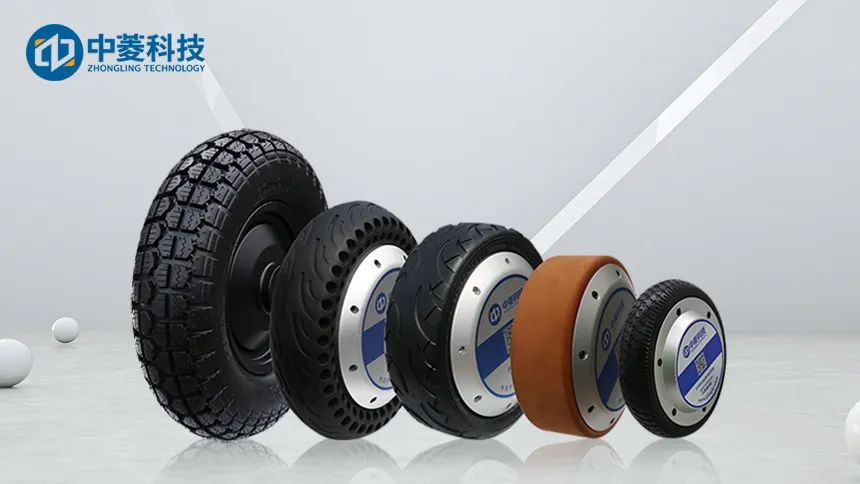Humanity has a long history of imagining and hoping for humanoid robots, which may be traced back to the clockwork knight designed by Leonardo da Vinci in 1495. For hundreds of years, this yearning for the pinnacle of science and technology has been continuously fermented through literary and artistic works such as "Artificial Intelligence" and "Transformers", and has become more and more deeply rooted in the hearts of the people.
But it is only in the past two decades that the dream of humanoid robots has gradually come closer to reality.
Back in 2000, Japan's Honda Corporation had devoted nearly two decades to research and development, and grandly launched the world's first truly bipedal robot, ASIMO. ASIMO is 1.3 meters tall and weighs 48 kilograms. If early robots suddenly turned while walking in a straight line, they had to stop first, which looked clumsy. ASIMO, on the other hand, is much more flexible. It can predict the next action in real time and change the center of gravity in advance, so it can walk freely and perform various "complex" actions such as "8" walking, walking down steps, bending down, etc. In addition, ASIMO can shake hands, wave, and even dance to music.
Before Honda announced it would stop developing ASIMO, this humanoid robot that had gone through seven iterations could not only walk at a speed of 2.7 kilometers per hour and run at a speed of 9 kilometers per hour, but could also talk to multiple people at the same time, and even complete the task of "unscrewing a water bottle, A series of operations such as holding a paper cup and pouring water are known as milestones in the development of humanoid robots.
With the advent of the mobile Internet era, the bipedal robot Atlas launched by Boston Dynamics, which took over from Honda, entered the public eye, pushing the application of bionics to a new level. For example, Atlas can perform delicate operations with practical value such as driving a car and using power tools. He occasionally performs a 360° aerial spin on the spot and a split-leg jump forward somersault. His flexibility is comparable to that of professional athletes. Therefore, every time Boston Dynamics releases a new video of Atlas, you can always hear "Wow" in the comment area.
Honda and Boston Dynamics are ahead of the curve in exploring humanoid robot technology, but their related products have fallen into an awkward situation of being poorly received. Honda stopped the ASIMO humanoid robot research and development project as early as 2018, and Boston Dynamics also changed hands several times.
There is no absolute distinction between technology. The key lies in finding a suitable scene.
Service robots have been in a "which came first, the chicken or the egg" dilemma for a long time. Because the technology is immature and the price is high, the market is unwilling to pay; and the lack of market demand makes it difficult for companies to invest large amounts of money in research and development. At the end of 2019, a sudden epidemic inadvertently broke this deadlock.
Since the outbreak of the epidemic, the world has discovered that robots have very rich application scenarios in the field of contactless services, such as virus sterilization, contactless distribution, shopping mall guide cleaning, etc. In order to fight the epidemic, all kinds of service robots have spread like drizzle into communities across the country, becoming an aspect of "China's fight against the epidemic." This has also fully verified the commercialization prospects that have been stuck in PPT and laboratories in the past.
At the same time, due to China's outstanding anti-epidemic results, the domestic supply chain was the first to resume operation, which also gave local robot manufacturers an important window period to develop technology and seize the market.
In addition, in the long term, the world is gradually entering an aging society. In some cities and regions with serious aging in our country, the proportion of people over 60 years old has exceeded 40%, and with this comes the problem of labor shortage. Service robots can not only allow the elderly to receive better companionship and care, but can also play great value in labor-intensive fields such as express delivery and takeaway. From these perspectives, service robots are about to usher in their golden age!
Shenzhen Zhongling Technology is a R&D, production and manufacturing enterprise that has long provided hub motors, drives and other accessories to service robot companies. Since the launch of the robot hub motor series in 2015, the products have been accompanied by customers in thousands of companies in more than 100 countries around the world. , and has taken a leading position in the industry. And we have always adhered to the concept of continuous innovation to bring the best products to customers, and a complete R&D and sales system to provide customers with the best purchasing experience. I hope we can develop rapidly with the robotics industry.
Mailbox:[email protected]
Office address:303, 3rd Floor, Building B, Fenghuang Zhigu, Tiezi Road, Xixiang Street, Bao'an District, Shenzhen
Factory address:6th Floor, Building D, Changxing Zhigu Industrial Park, No. 16 Changlong Xinfeng Street, Huangjiang Town, Dongguan City